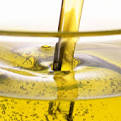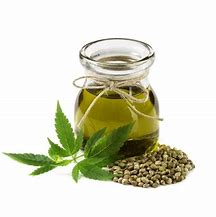Refined Oils






-
Refined Oils
- Highly refined oils are products which have been tailored to meet the particular requirements of large scale users such as the pharmaceutical industry, cooking oil manufacturers, food processors and cosmetics companies. The process is useful commercially as much more oil is obtained this way than by cold pressing As indicated above, processing frequently involves the use of high temperatures and chemicals, which means that many of the natural properties of the oil are lost. The whole character of the oil is altered, which is why its use in aromatherapy is not desirable. This is the type usually found on supermarket shelves.
- Refining Includes:
Removal of colour by bleaching. Because the colour of the refined oil may vary from batch to batch, bleaching gives a uniform colour. This may then be enhanced by the addition of a natural' pigment such as xanthophyll (a derivative of chlorophyll) or B-carotene to produce a standard product with a finished colour. - Removal of taste and smell so that the end product is bland and tasteless. During processing some of the natural chemicals can break down to yield aldehydes and ketones, materials with a strong taste and smell, and these are removed by the use of superheated steam (temperatures of around 200C)
- Addition of synthetic antioxidants to extend the shelf life.
- Addition of vitamins and minerals to replace those destroyed during the refining process.
- Removal of organic solvents. The yield of oil from the 'cake' of crushed and cooked nuts, etc can be increased by the use of solvents such as hexane and petroleum spirit, and these have to be stripped off. The refining removes most of the solvent residues, but some 1-2 parts per million (ppm) still remain.
- Removal of any free fatty acids which can be bitter to the taste and corrosive. A figure known as the Acid Value gives an indication as to the level of free fatty acids in an oil, and when the Acid Value is greater than 5.0 the oil can give a burning sensation in the back of the throat. Oils high in free fatty acids can also react to metal containers, forming products which will result in decreased shelf life. The acids can be removed by the use of caustic soda.
- Removal of any free fatty acids which can be bitter to the taste and corrosive. A figure known as the Acid Value gives an indication as to the level of free fatty acids in an oil, and when the Acid Value is greater than 5.0 the oil can give a burning sensation in the back of the throat. Oils high in free fatty acids can also react to metal containers, forming products which will result in decreased shelf life. The acids can be removed by the use of caustic soda.
Removal of natural waxes, as these as these materialism lead to cloudiness, especially if the oils are stored at low temperatures (eg 4C).
Despite going through some or all of the above processes the resulting oil can still legally be labelled as 'pure' and even 'natural'. For example, here is a piece from a technical paper describing the processing of a vegetable oil:
Seeds harvested in 1985 and 1986 were crushed in October 1986 by direct solvent extraction using the extruder for seed pretreatment. The resulting crude oil was phosphoric acid pretreated, alkali refined, vacuum bleached with activated clay and carbon, and deodorized, yielding oil with 0.7 loviband colour, and bland flavour and odour.'
A pure oil maybe-but not the best for aromatherapy and massage!- Storage
The triacylglycerols that make up fixed oils can undergo attack by oxygen and moisture in the atmosphere, and fatty acids present will also react with oxygen in the presence of light or elevated temperatures . This means that the correct storage of carrier oils is most important. Bulk quantities should be kept in stainless steel containers, under an inert gas and at a suitably low temperature. Therapists also should keep their oils cool and preferably in the dark. As in the case of essential oils, the head space above the oil in a container (or bottle) should be minimised. Thus, oil which may take some time to use is best decanted off into a number of smaller bottles (with minimal air space) which can then be used singly as needed. - Conclusion
The quality of carrier oils is equally important as the quality of essential oils, and inferior product is, unfortunately, generally easy to come by. Aromatherapists want the least refined, nearest-to-nature material available, and this is more likely to be obtained from a knowledgeable specialist supplier. It is well worth while taking the time and the trouble to establish a relationship with a company or companies you feel you can trust, and who are ethical in their approach. - Reference: Carrie Oils For Aromatherapy & Massage: Len Price with Ian Smith & Shirley Price
Articles-Most Read
- Home
- Contact Us
- Coconut Oil-2
- Absorption Ratings for Carrier Oils
- Cold Pressing Method
- What are Essential Fatty Acids
- Cherry Kernel Oil
- Fixed Oils and Skin Penetration
- Hempseed Oil
- Almond Oil
- Cocoa butter
- Camelina Oil
- Coconut Oil
- Antibacterial Effects Of Carrier Oil
- Lime Blossom Oil (macerated)
- Carrot Oil, Wild Carrot Oil (macerated)
- Apricot Kernel Oil
- Kukui Nut Oil
- Jojoba Wax
- Pumkin Seed Oil - Cucurbita maxima, C. pepo
- Passion Flower OIl (Macerated)
- Hydrocotyle Oil (macerated)
- Palm Kernel Oil
- Rapeseed Oil - Carrier Oil
- Nutrients
Who's On Line
We have 138 guests and no members online
Articles-Latest
- How to Make Homemade Olive Oil: A Step-by-Step Guide
- 20 Evidence-Based Aloe Vera Oil Benefits For Skin, Hair & Health
- Peanut oil - Cold pressed - Are There Health Benefits? How To Make
- What Are the Health Benefits of Black Seed Oil?
- Comfrey oil Infused
- Chamomile Flowers Infused Oil
- Calendula Flowers Infused Oil
- Arnica Flowers Infused Oil
- How To Make Herb-Infused Oils
- DIY avocado oil for healthy skin
- How To Make Coconut Oil
- 8 Benefits of Mustard Oil, Plus How to Use It
- SHOREA STENOPTERA SEED BUTTER
- Shea Butter- 7 Amazing Benefits Of Shea Butter
- Monoi Oil For Hair & Skin
- Mango Seed Oil
- Cohune Oil Is The Next Big Thing
- Brazil Nut OIl
- 7 Impressive Benefits Of Allspice
- Camelina Oil Benefits, Uses, and Side Effects




